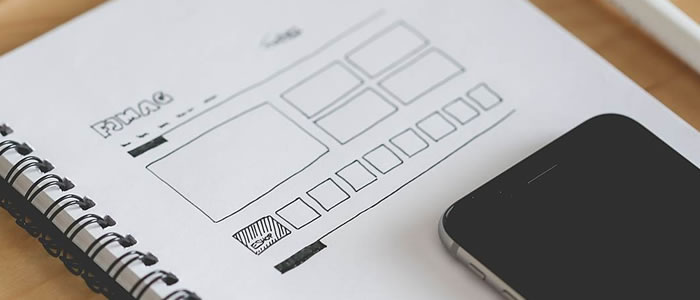The design field is pretty crowded. If this is your “calling,” then you have to accept that you are in competition with a lot of creatives that may know more than you. You have to accept that you will have to take all of that creativity you have and translate it into products that others love. And you have to accept that you will need to constantly practice your craft, learn from others, and adopt a path of continual self-education.
In this respect, your career is like all others. There is always more to learn; there are always new skills to develop. Consider any other major profession. There are continuing education requirements in order to keep medical, legal, teaching, and accounting licenses. You don’t have a license to keep, but you do have to keep on improving and evolving. If your designs seem “lame” to you right now, think about these reasons why they may be failing, and how you can fix them.

Not Having Your Own “Voice”
If you have gone through design school or if you are self-taught, there is a grave pitfall for many designers. You tend to be inspired by designers that have “made it.” This is normal. But at some stage, you have to have your own point of view – a style that is uniquely yours and with which you are comfortable.
This may involve some risk-taking on your part. You may have to get out of that comfort zone of emulating others and into experimentation with a design until you’ll find your own “voice.” Start experimenting and feed that creative passion within you. As long as you keep emulating others, your designs will never live up to your expectations.

Not Committing to Self-Education
You can continue to take courses in design (traditional or online). And you will continue to get lots of training in the “science” of design. These courses are valuable, of course, but they have their limitations.
You will still study the work of others; you will still refine your concepts of the principles of design. But that creativity is still on you. And that may come from other forms of self-education. You need to engage in activities that promote your own creativity – spend time in nature, go to the zoo and the art museum, sit in a public place and observe the people around you, read and write, listen to music that you love, put yourself in the company of other creatives from all fields.
These are the activities that will give you creative ideas. While there is much to be said for formal education, it is still only the “science” of design.
Trying to Please Everyone
Your voice is unique. And it will never appeal to everyone, even to every client you may have. You have to find that balance between pleasing clients and not compromising your own principles.
When much of this depends upon your basic needs for income, you obviously have to bend more. But try to influence your clients diplomatically. You don’t want a design or project out there that will hurt your reputation within the design community.
Not Keeping it Simple
People who view your designs want simplicity. Whether you are designing a logo or a website, always ask yourself how you can make the message simple. Avoid complicated and busy page layouts. Do not make visitors “work” to find what they need to find. A website is not designed to meet your needs or the needs of your client. It is designed for the needs of the users.
You want your creativity to shine, but not at the expense of efficiency.
Not Using Grids
Every page must have synchronicity of design. You may like asymmetric stuff, but most users unconsciously do not. They want to experience order when they visit a web page. When a page “looks” orderly, there is a psychological appeal to a visitor. They are more likely to stay and partake of what the page has to say. You are designing a site so that your client gets traffic.
Your creativity cannot contribute to traffic loss.

Not Placing Value on Whitespace
Eyes get tired when the design is too busy. You may be trying to “kill two birds with one stone” and it will not work. You want to get the message out there, but you are cramming too much on a single page. Find a way to divide up the message, even if it means more pages. If you don’t create enough whitespace, visitors will leave.
Consider white space as important a design element as anything else you do.
Inconsistency
The idea of a “theme” for a website is just that. There is a consistent theme that is portrayed by color scheme, font, and every other UI element. Excessive creativity may lead to inconsistency of design among the pages of a website, and this is never a good thing. It confuses visitors and makes the entire site seem random.

Overdoing the “Bells and Whistles”
There is a certain amount of visual content that is expected and that attracts users. Sharp, well-placed photos and images can be really engaging. Banners can be good on certain pages; animation is a great attraction. Overdoing these things, however, becomes a distraction and takes visitors to a site away from the main messages. Some users are in a hurry. Always have a “skip” button when you have a video or an animation that may take up valuable time.
Unreadable Fonts and Text
There are so many design elements involved here. Beautifully handwritten fonts may be fine for print, but they are not great for reading on a website. Users want reader-friendly fonts. And watch colors of backgrounds against any text. Black print on a dark purple background is a major fail because there is too much work involved for the reader. Find the right balance of background and text color. And don’t forget consistency of font, layout, and color.

Conclusion
You are creative and very passionate about that creativity. And that is a huge plus in the design world. You have to find the right balance, however, between those creative urges that make you unique and the demands of clients and site users. If not finding that balance, and not finding compromises, the result may just be “lame” designs. You won’t be proud of them, your clients will not be happy, and users will most certainly be “turned off.”